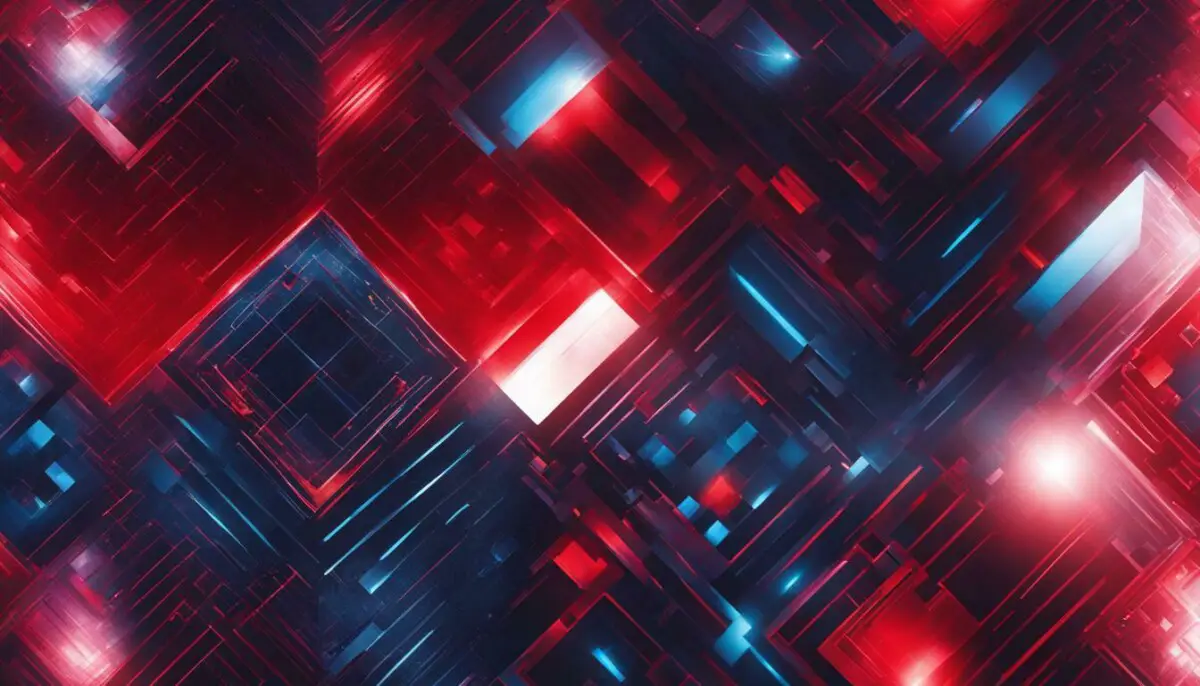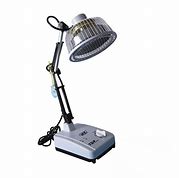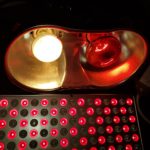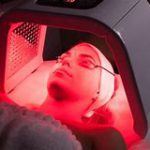Last Updated on 7 months by Francis
Alternative therapies have gained increasing popularity in recent years as people search for more natural and non-invasive treatment options. In this article, we will explore the differences between two popular treatments – red light therapy and cold laser therapy. Both therapies use low-level wavelengths to treat a range of conditions, but they differ in their mechanisms of action, benefits, and intended applications. Let’s take a closer look at each therapy to see which one may be right for you.
Contents
Key Takeaways:
- Red light therapy and cold laser therapy are alternative treatments that use low-level wavelengths to stimulate healing and tissue repair.
- Red light therapy is non-invasive and may be beneficial for skin health, while cold laser therapy is often used for pain relief and musculoskeletal conditions.
- Understanding the differences between these two therapies can help you determine the most appropriate treatment for your specific needs.
Understanding Red Light Therapy
Red light therapy is a non-invasive treatment that uses low-level wavelengths of red light to stimulate healing and tissue repair. It has been shown to have various benefits, such as promoting collagen production, reducing inflammation, and improving skin health.
Unlike some other therapies, red light therapy does not involve the use of harmful UV rays, making it a safe option for people of all ages and skin types.
The way red light therapy works is through a process called photobiomodulation. When the red wavelengths penetrate the skin, they interact with the cells to enhance their function and promote healing.

Research has shown that red light therapy can be effective in treating various conditions, such as acne, rosacea, and psoriasis. It may also help to reduce the appearance of fine lines and wrinkles, stimulate hair growth, and even improve mood and cognitive function.
If you’re looking for a non-invasive, safe, and effective way to promote healing and rejuvenation, red light therapy may be the treatment option for you.
Exploring Cold Laser Therapy
Cold laser therapy, also known as low-level laser therapy, is a non-invasive treatment that uses specific wavelengths of light to target tissues and stimulate healing. It has gained popularity for its effectiveness in pain relief and tissue healing.
Unlike hot lasers used in surgical procedures, cold lasers do not produce heat and are safe for use without damaging surrounding tissues. The light energy passes through the skin and is absorbed by cells, triggering a cascade of processes that promote healing and repair.
One of the main benefits of cold laser therapy is its ability to reduce inflammation. Inflammation is a natural response of the body to injury or infection, but chronic inflammation can lead to tissue damage and worsen pain. Cold laser therapy has been shown to decrease levels of inflammatory markers, helping to alleviate symptoms such as swelling and redness.
Cold laser therapy can also aid in tissue regeneration and wound healing. The light energy stimulates the production of collagen and new blood vessels, enhancing the body’s natural healing mechanisms and promoting tissue repair.
Moreover, cold laser therapy can help relieve musculoskeletal discomfort, including back pain, joint injuries, and arthritis. It works by increasing blood flow to the affected area, reducing muscle spasms, and stimulating the release of endorphins, the body’s natural pain relievers.
Overall, cold laser therapy offers a safe and effective alternative to traditional therapies for pain relief and tissue healing. If you are experiencing chronic pain or have a soft tissue injury, consult with a healthcare professional to see if cold laser therapy may be suitable for your needs.
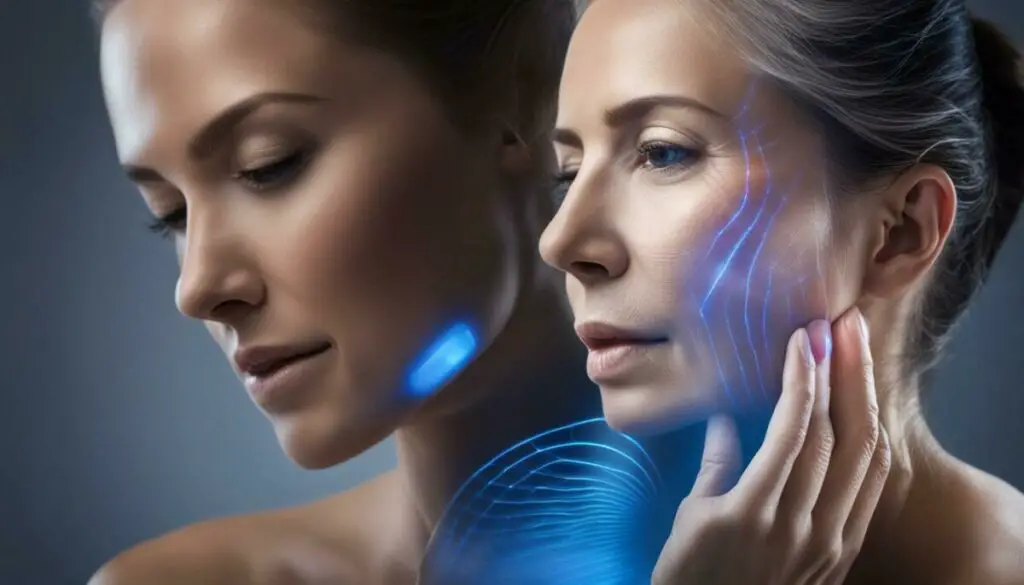
Key Differences between Red Light Therapy and Cold Laser
While both red light therapy and cold laser therapy have been shown to be effective alternative treatments, there are key differences to consider when choosing between the two. Red light therapy uses a broader range of wavelengths, typically between 620 and 700 nanometers, to penetrate the skin and stimulate cellular activity. On the other hand, cold laser therapy uses a narrower range of wavelengths, typically between 600 and 980 nanometers, to target specific tissues and provide pain relief.
| Red Light Therapy | Cold Laser Therapy | |
|---|---|---|
| Wavelength Range | 620-700nm | 600-980nm |
| Penetration Depth | Shallower – primarily affects skin cells | Deeper – can target specific tissues and organs |
| Applications | Skin health, wound healing, muscle recovery, joint pain | Pain relief, inflammation reduction, tissue regeneration |
As the table indicates, red light therapy is primarily used for skin health, wound healing, muscle recovery, and joint pain. Cold laser therapy, on the other hand, is primarily used for pain relief, inflammation reduction, and tissue regeneration.
Which One Is Right for You?
Choosing between red light therapy and cold laser therapy depends on the condition you’re looking to treat. If you’re looking to improve skin health, reduce wrinkles, or alleviate musculoskeletal pain, red light therapy may be a good option. On the other hand, if you’re experiencing pain or inflammation related to an injury or chronic condition, cold laser therapy may be more appropriate.
Ultimately, the best way to determine which treatment is right for you is to consult with a healthcare professional.
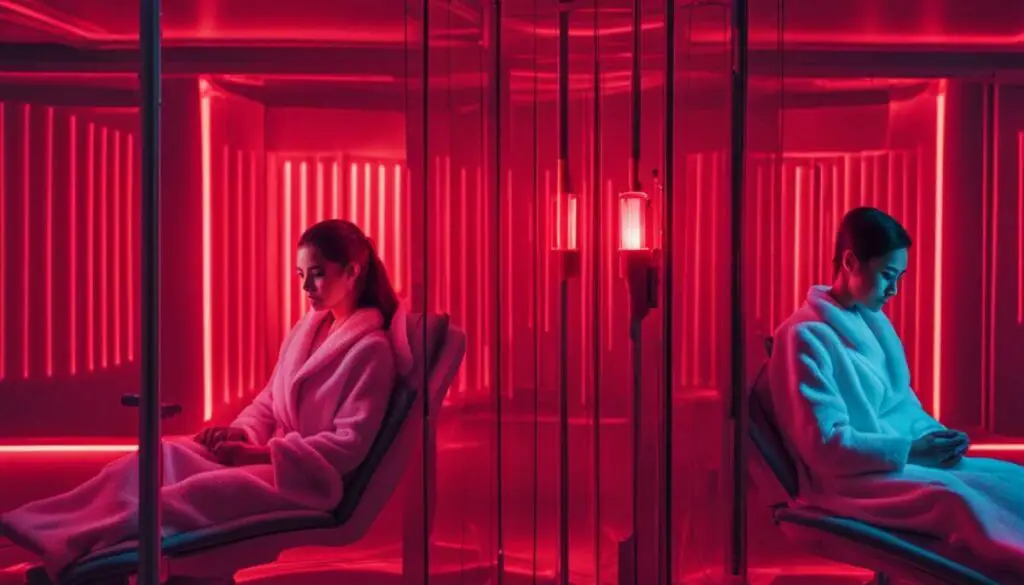
Benefits of Red Light Therapy
Red light therapy has gained popularity for its multitude of benefits, ranging from skin health to muscle recovery. Here are some of the key advantages of incorporating red light therapy into your wellness routine:
- Reduced Inflammation: Red light therapy has been shown to have anti-inflammatory effects, which can alleviate pain, swelling, and redness in various parts of the body.
- Promotes Collagen Production: Collagen is a crucial protein that helps keep skin looking youthful and healthy. Red light therapy can stimulate collagen production, reducing the appearance of fine lines and wrinkles.
- Improved Skin Health: Red light therapy can improve the overall appearance and health of the skin, reducing acne and other blemishes.
- Enhanced Muscle Recovery: For athletes or those with an active lifestyle, red light therapy can help speed up muscle recovery and alleviate soreness.
- Reduced Joint Pain: For individuals with arthritis or other joint conditions, red light therapy can help alleviate pain and inflammation, improving mobility and overall quality of life.

As you can see, red light therapy has numerous benefits that can improve both your physical health and appearance. If you’re interested in trying red light therapy, be sure to consult with a healthcare professional to determine the best treatment plan for you.
Cold Laser Therapy for Pain Relief
Cold laser therapy is a low-risk, non-invasive treatment that can be utilized to relieve pain in different parts of the body. By using specific wavelengths of light, cold laser therapy stimulates the affected tissues’ healing and reduces inflammation and discomfort in the process.
Research has shown that cold laser therapy may help accelerate healing in sports injuries, musculoskeletal pain, and joint conditions such as arthritis.
The treatment works by targeting the injured area with a low level of laser light. The light penetrates the skin and interacts with the cells, increasing their metabolic activity. As a result, the cells produce more ATP, a molecule that provides energy to the cells, which then triggers a cascade of physiological responses that promote healing.
The process is painless, and patients usually feel a slight warming sensation or a tingling feeling during the therapy. Depending on the condition being treated, several sessions may be required to achieve maximum benefits.

| Benefit | Description |
|---|---|
| Pain relief | Cold laser therapy has analgesic effects and can be used to treat various types of acute and chronic pain, such as neck pain, back pain, and joint pain. |
| Reducing inflammation | The therapy helps to reduce inflammation and swelling by increasing blood flow to the affected area, thereby enhancing the immune system’s response to the injury site. |
| Speeding up wound healing | Cold laser therapy enhances cell function and metabolism, speeding up the healing process of wounds, incisions, and ulcers. |
Cold laser therapy is a safe and effective option for those seeking relief from pain and inflammation. It is a non-invasive treatment that does not require surgery or medication, making it a popular choice among patients looking for natural and less invasive therapies.
How Red Light Therapy Works
Red light therapy works by penetrating the skin with low-level wavelengths of red light. These wavelengths stimulate the mitochondria in cells, which then increases ATP production and triggers various biological processes that promote healing and tissue repair.
One of the key mechanisms of action behind red light therapy is its ability to promote collagen production. Collagen is a vital protein that keeps the skin youthful and firm, but as we age, collagen levels decrease, leading to wrinkles and sagging skin. Red light therapy can boost collagen levels, reducing the appearance of fine lines and wrinkles.
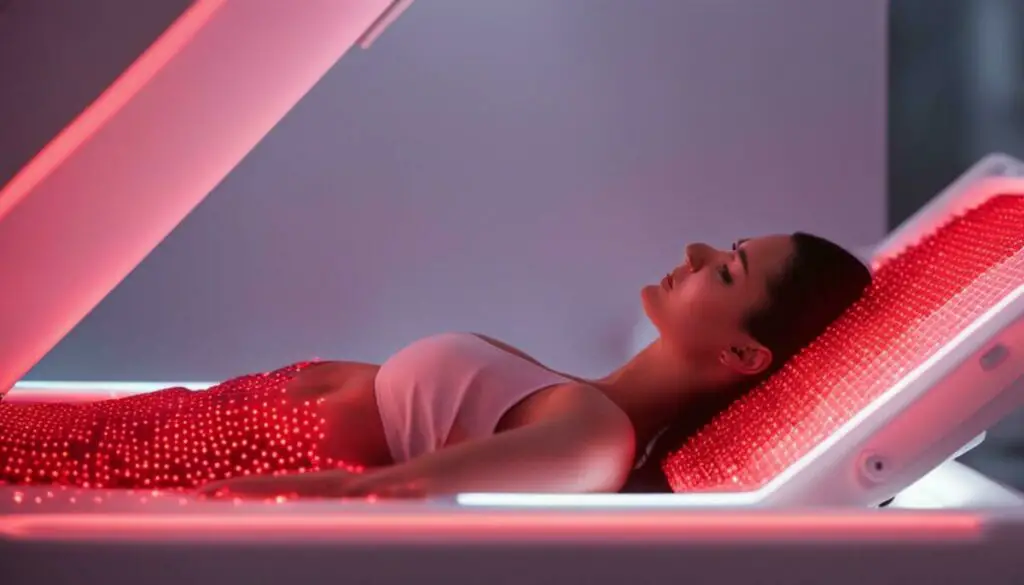
Red light therapy also has anti-inflammatory properties, which can help reduce pain and inflammation in the body. It can also improve blood circulation, enhancing the delivery of oxygen and nutrients to the tissues.
This therapy is non-invasive, painless, and has no known side effects. It can be used to treat a wide range of conditions, from skin health to musculoskeletal pain. Overall, red light therapy is a safe and effective alternative therapy that can lead to significant improvements in overall health and well-being.
How Cold Laser Therapy Works
Cold laser therapy, also known as low-level laser therapy, uses specific wavelengths of light to target tissues and stimulate healing. This therapeutic approach has gained popularity for its effectiveness in providing relief from various types of pain, including musculoskeletal discomfort and joint conditions.
The interaction between the laser and tissues is based on the principle of photobiomodulation. When the light penetrates the skin, it stimulates the mitochondria in the cells to produce more ATP (adenosine triphosphate), which is the energy source required for cellular function and repair.
Each wavelength of light has a different effect on the body’s tissues, and the choice of the correct wavelength is essential. The most commonly used wavelengths for cold laser therapy are 600-1000nm, which penetrate the skin and tissues at different depths.
Once the laser is applied to the affected area, it triggers a cascade of cellular responses, including the release of endorphins, vasodilation, and the stimulation of collagen production. These responses help to reduce inflammation, promote tissue healing, and alleviate pain.
Cold laser therapy is a non-invasive and pain-free treatment option that has shown promising results in clinical studies. It is often used in conjunction with other therapies, such as physical therapy and medications, to provide a more comprehensive and effective treatment approach.
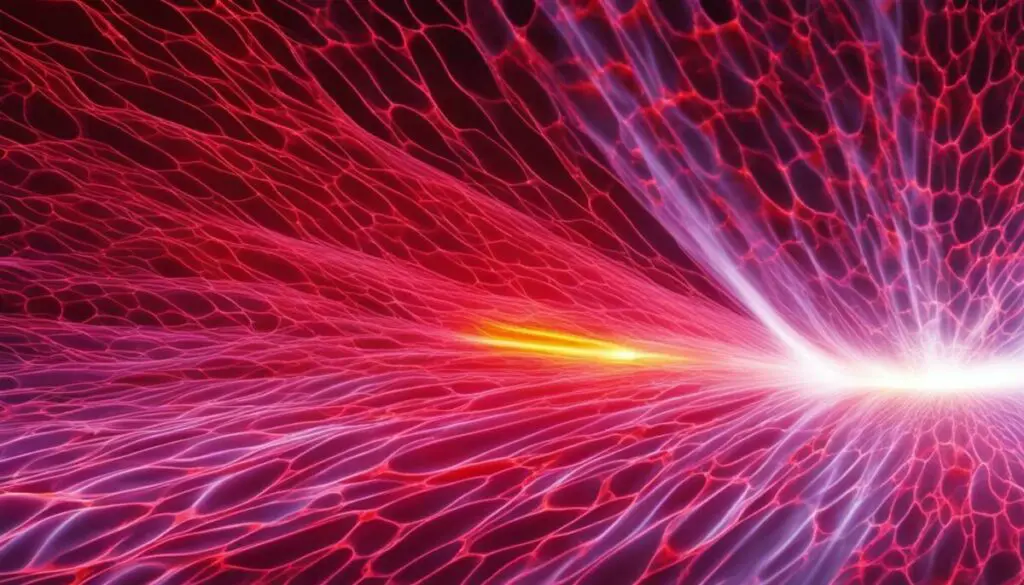
How Cold Laser Therapy is Applied
Before the cold laser therapy session, the therapist will discuss the patient’s medical history and specific symptoms to determine the most appropriate treatment plan. During the treatment, the therapist will apply the laser to the affected area for a specified duration. The duration varies depending on the severity of the condition and can range from a few minutes to over an hour.
The number of sessions required will also depend on the severity of the condition being treated. Most patients experience significant pain relief and improvement in function after three to six sessions.
In summary, cold laser therapy is a safe and effective treatment option that can help alleviate pain, reduce inflammation, and promote tissue healing. It is used to treat various conditions, from chronic pain to sports injuries, and has been shown to provide significant benefits. Consult with a healthcare professional to discuss whether cold laser therapy is right for you.
Red Light Therapy for Skin Health
Red light therapy is a versatile treatment that has become increasingly popular for its benefits in promoting healthy skin. Its ability to stimulate collagen production, reduce inflammation, and improve circulation makes red light therapy an excellent option for those looking to improve skin texture, tone, and overall appearance.
One of the primary uses of red light therapy for skin health is acne treatment. The wavelengths of red light penetrate the skin and target the bacteria that cause acne, reducing inflammation and promoting healing. Studies have shown that red light therapy can significantly reduce acne lesions and improve the overall condition of the skin.
Red light therapy is also effective in reducing fine lines and wrinkles, making it a popular anti-aging treatment. It works by stimulating collagen production, which helps to improve skin elasticity and firmness. This can result in a more youthful appearance and reduced signs of aging.
In addition to acne and anti-aging benefits, red light therapy can also improve the skin’s overall texture and tone. It helps to even out skin pigmentation and reduce the appearance of scars and stretch marks. Red light therapy is also an excellent option for those with rosacea or sensitive skin, as it is non-invasive and does not irritate the skin.
Overall, red light therapy is a safe and effective treatment for improving skin health. Whether you’re looking to reduce acne, minimize the signs of aging, or improve the overall appearance of your skin, red light therapy may be just what you need.
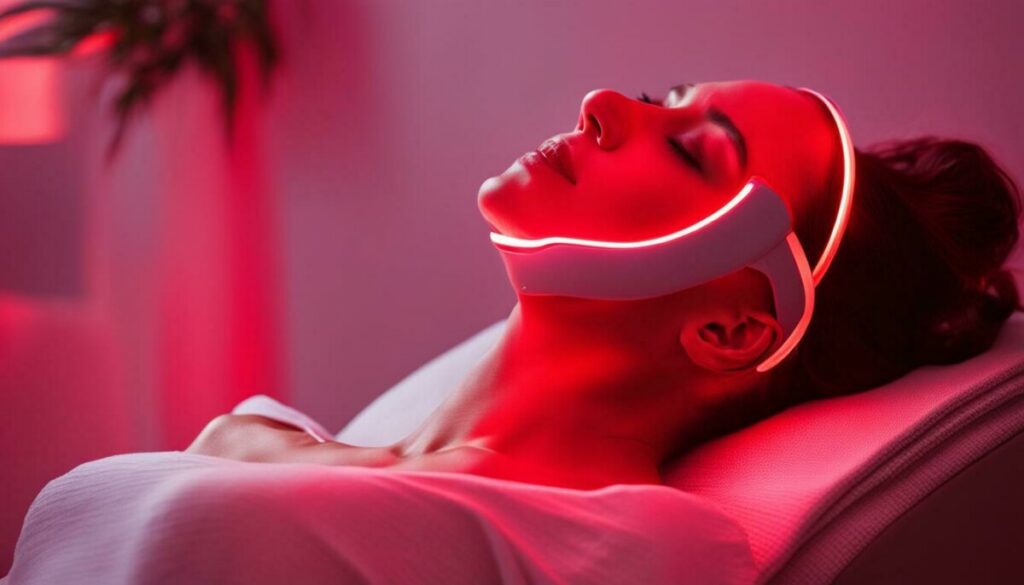
Cold Laser Therapy for Pain Relief
Cold laser therapy has become increasingly popular for its ability to provide pain relief without the use of medication or invasive procedures. It is frequently used to treat musculoskeletal conditions such as arthritis, back pain, and sports injuries.
During cold laser therapy, low-level light is directed at the affected area, penetrating deep into the tissues. This triggers a response at a cellular level, stimulating the body’s natural healing processes. The therapy has been shown to reduce inflammation, promote tissue repair, and alleviate pain.
One of the significant advantages of cold laser therapy is that it is non-invasive and has no side effects. Patients can avoid the risks associated with surgery or medication, making it a popular choice for those seeking natural pain relief.
Studies have found that cold laser therapy can be as effective as traditional pain-management treatments such as physical therapy, acupuncture, and medication. A recent study published in the Journal of Back and Musculoskeletal Rehabilitation found that cold laser therapy significantly reduced pain and improved mobility in patients with chronic low back pain.
If you suffer from chronic pain, cold laser therapy may be an effective solution for you. Consult with a healthcare professional to determine if this therapy is suitable for your specific needs.
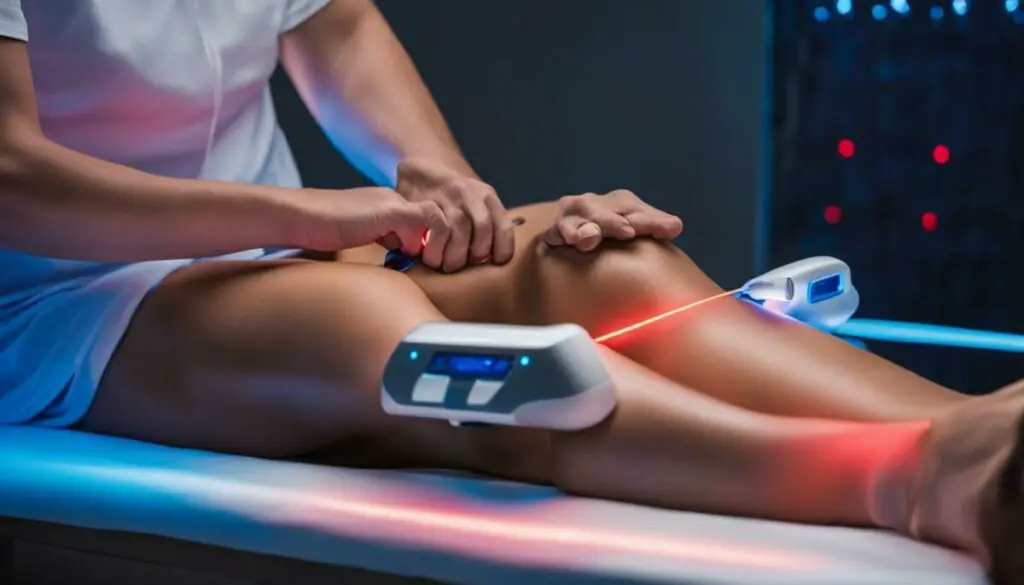
Does Red Light Therapy Work?
Before investing time and money in any treatment, it’s essential to know if it actually works. So, does red light therapy work?
Yes, it does. There are numerous studies that support the effectiveness of red light therapy for various conditions, including musculoskeletal pain, skin health, and wound healing.
For instance, a 2014 study found that red light therapy reduced joint pain and stiffness in patients with osteoarthritis of the knee. Another study published in 2018 showed that red light therapy can improve skin health, reducing the appearance of fine lines and wrinkles.
Moreover, red light therapy has been shown to promote cellular energy production and tissue repair, speeding up healing processes and reducing inflammation. This mechanism of action is well-documented in scientific literature and supports the use of red light therapy for a range of conditions.
However, it’s worth noting that red light therapy is not a miracle treatment, and its effectiveness may vary depending on the individual and the specific condition being treated. It’s always recommended to consult with a healthcare professional to determine if red light therapy is right for you.
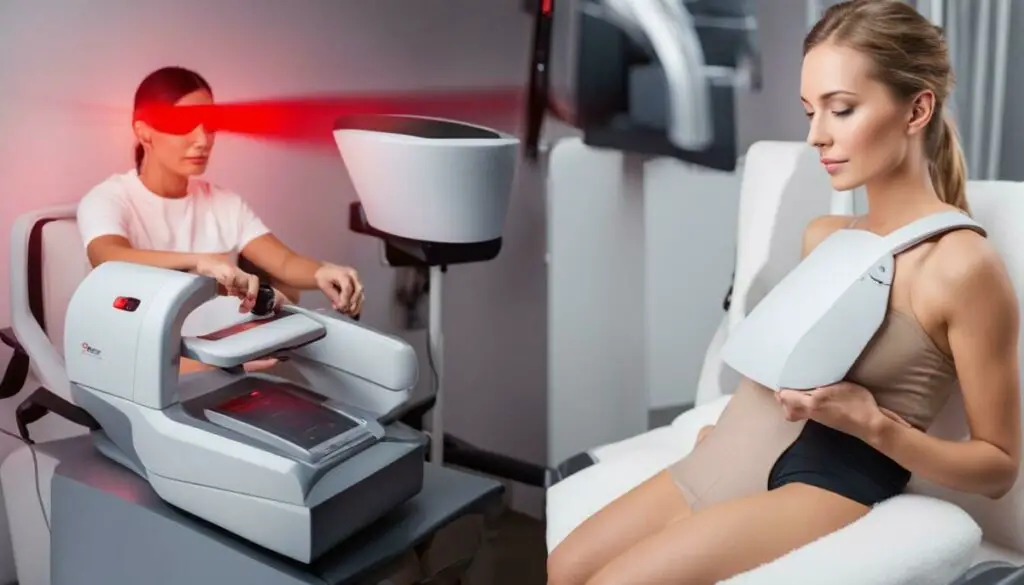
In summary, red light therapy has been shown to be an effective treatment for various conditions, including pain, skin health, and wound healing. Its mechanism of action is well-documented in scientific literature, and numerous studies support its use. However, as with any treatment, individual results may vary, and it’s essential to consult with a healthcare professional before starting any new therapy.
Conclusion
When considering the two alternative therapies of red light therapy and cold laser therapy, it is essential to understand their individual differences, benefits, and how they work.
Red light therapy is a non-invasive option that uses low-level wavelengths of red light to stimulate healing and tissue repair. It has proven effective in promoting collagen production, reducing inflammation, and improving skin health, among other benefits.
Cold laser therapy, on the other hand, uses specific wavelengths of light to target tissues and stimulate healing. It is predominantly used for pain relief and has been shown to reduce inflammation and promote tissue regeneration.
Understanding these differences will help you determine which therapy may be best suited for your specific needs. Both red light therapy and cold laser therapy offer unique advantages and have been proven effective for various conditions. Consult with a healthcare professional to discuss your options and determine the most appropriate treatment for you.
Remember
Whether you choose red light therapy or cold laser therapy, always ensure to follow safety precautions and consult with a healthcare professional before starting any new treatment.
By understanding the mechanisms of these alternative therapies and their benefits, you can make an informed decision about which therapy may be most effective for you.
FAQ
What is red light therapy?
Red light therapy is a non-invasive treatment that uses low-level wavelengths of red light to stimulate healing and tissue repair.
How does red light therapy work?
Red light therapy interacts with cells, stimulates mitochondrial function, and triggers various biological processes to promote healing and rejuvenation.
What is cold laser therapy?
Cold laser therapy, also known as low-level laser therapy, uses specific wavelengths of light to target tissues and stimulate healing.
How does cold laser therapy work?
Cold laser therapy interacts with tissues and triggers cellular responses to promote healing and pain relief.
What are the key differences between red light therapy and cold laser therapy?
The main differences between red light therapy and cold laser therapy include the wavelengths used and their intended applications.
What are the benefits of red light therapy?
Red light therapy offers a range of benefits, including promoting collagen production, reducing inflammation, and improving skin health.
What are the benefits of cold laser therapy?
Cold laser therapy has shown effectiveness in reducing inflammation, speeding up wound healing, and alleviating musculoskeletal discomfort.
Can red light therapy improve skin health?
Yes, red light therapy can improve conditions such as acne, wrinkles, and inflammation, while promoting overall skin rejuvenation.
Can cold laser therapy provide pain relief?
Cold laser therapy has shown promise in providing relief from various types of pain, including musculoskeletal discomfort and joint conditions.
Does red light therapy work?
Scientific evidence and research support the efficacy of red light therapy for various conditions, but consulting with a healthcare professional is recommended.

